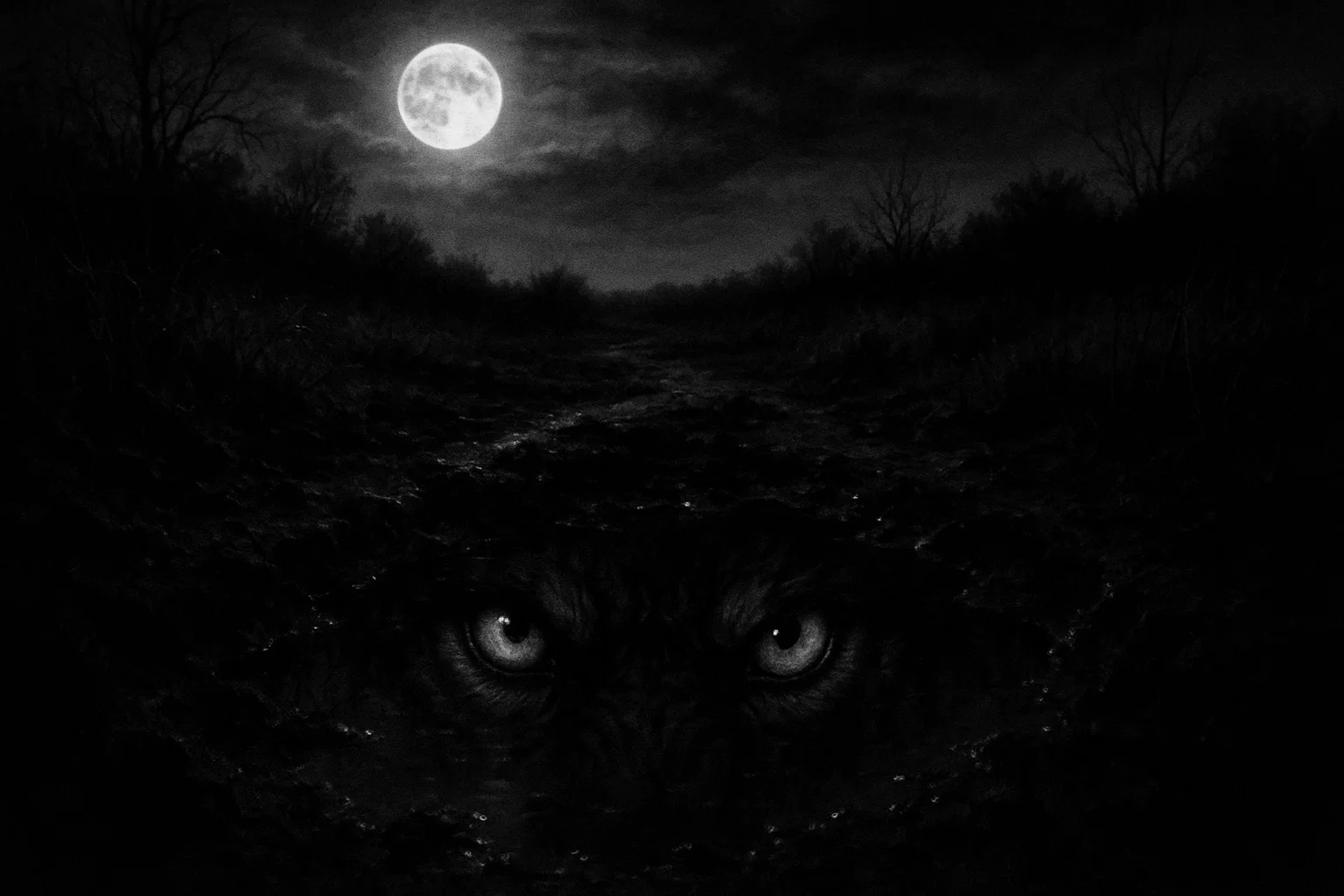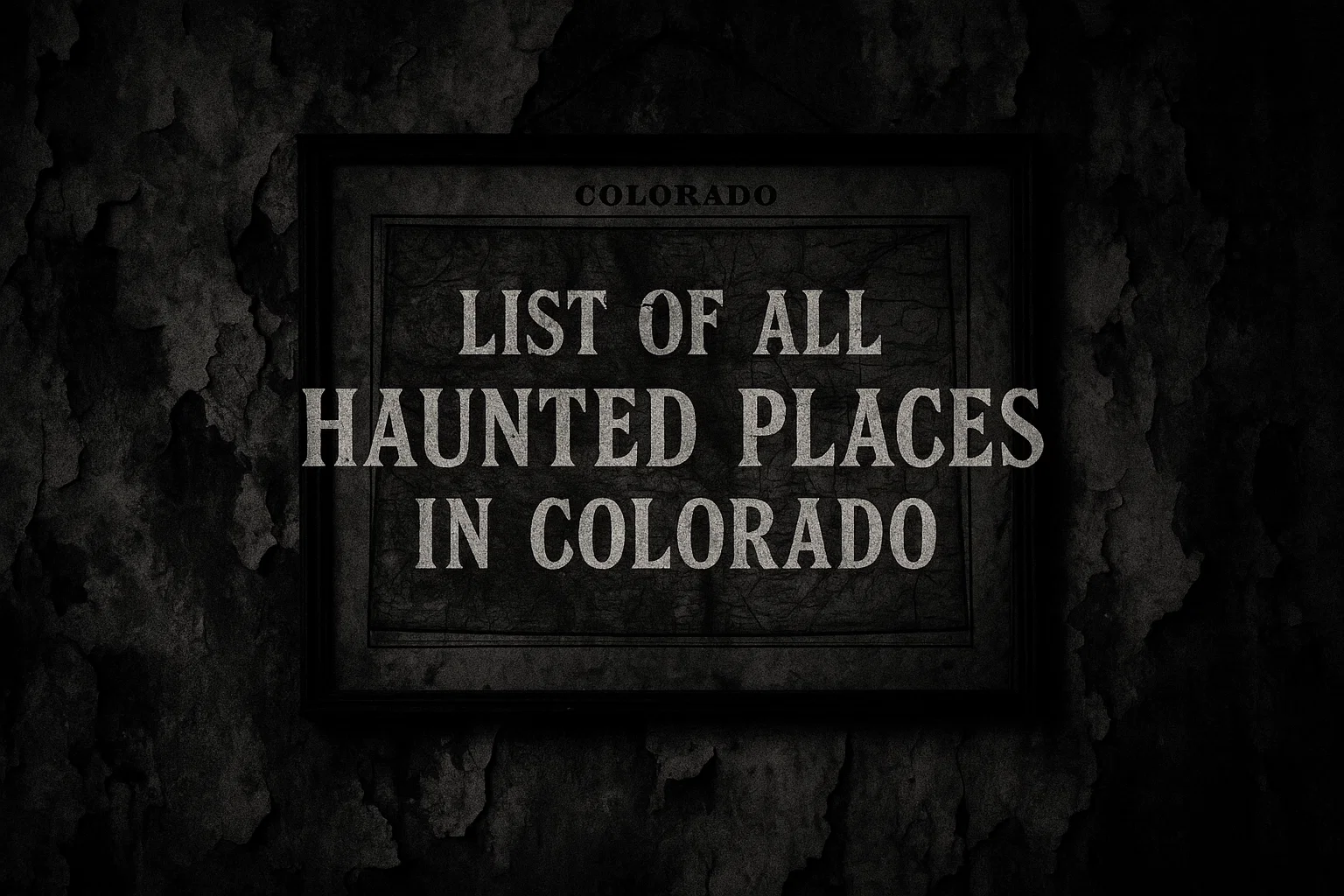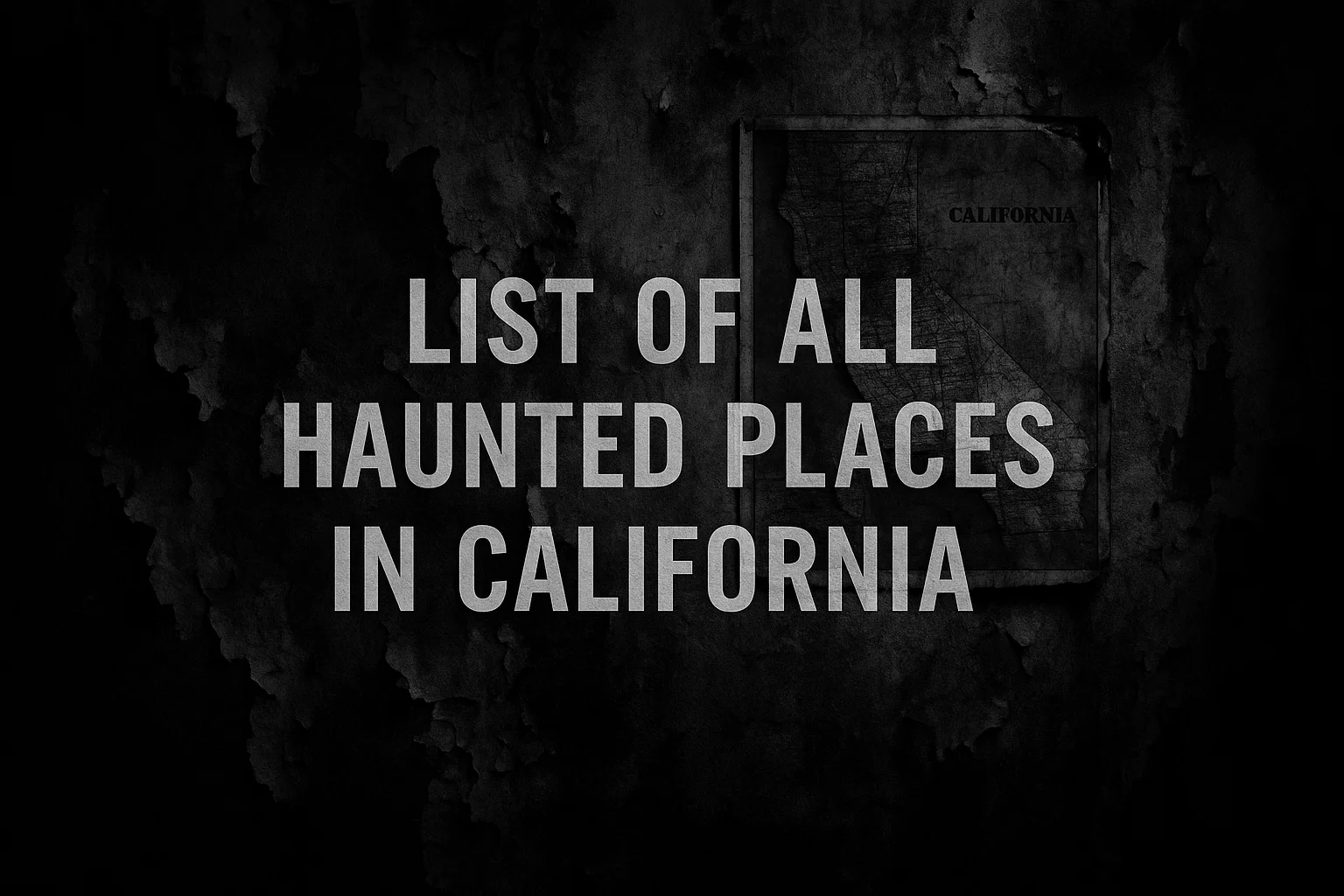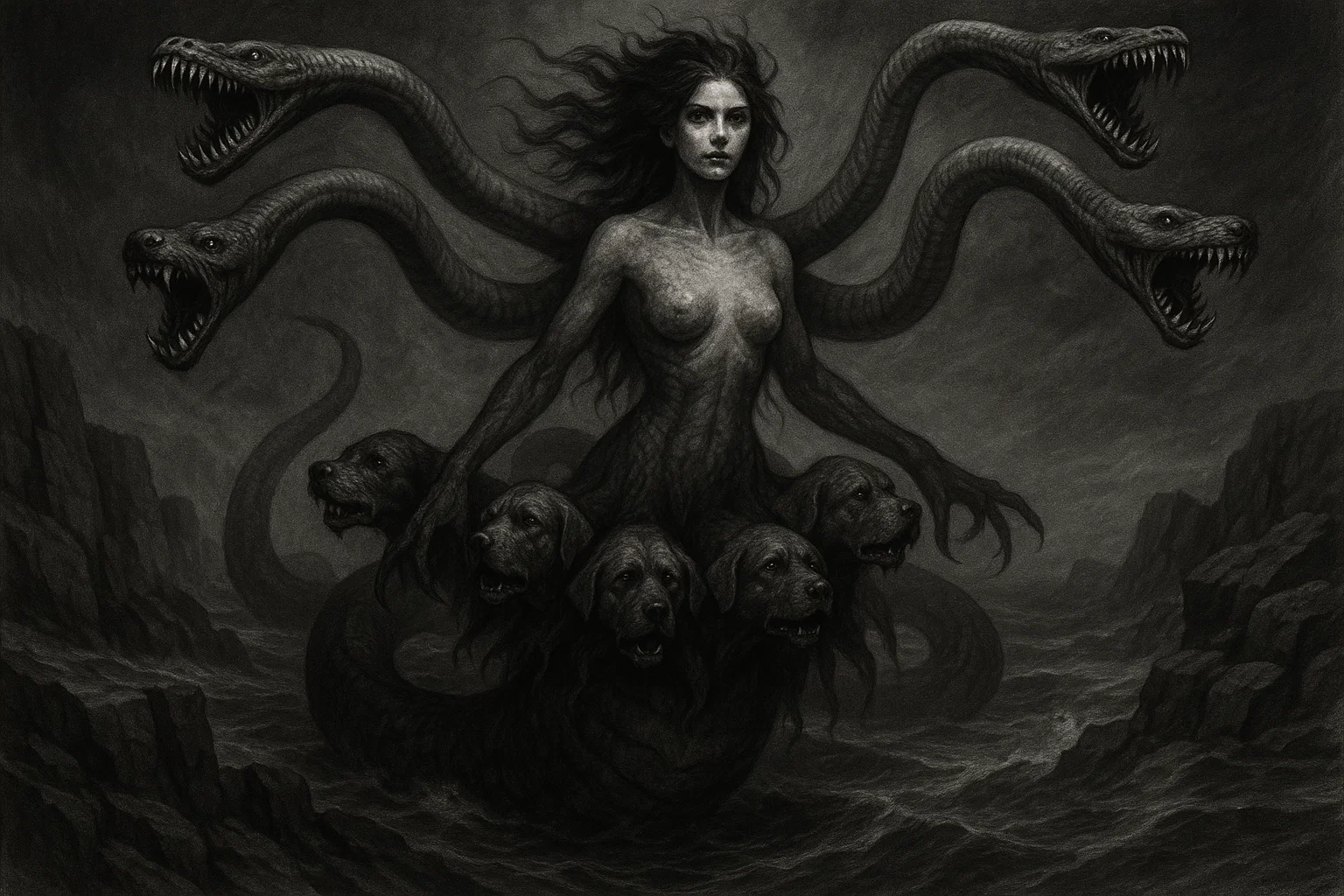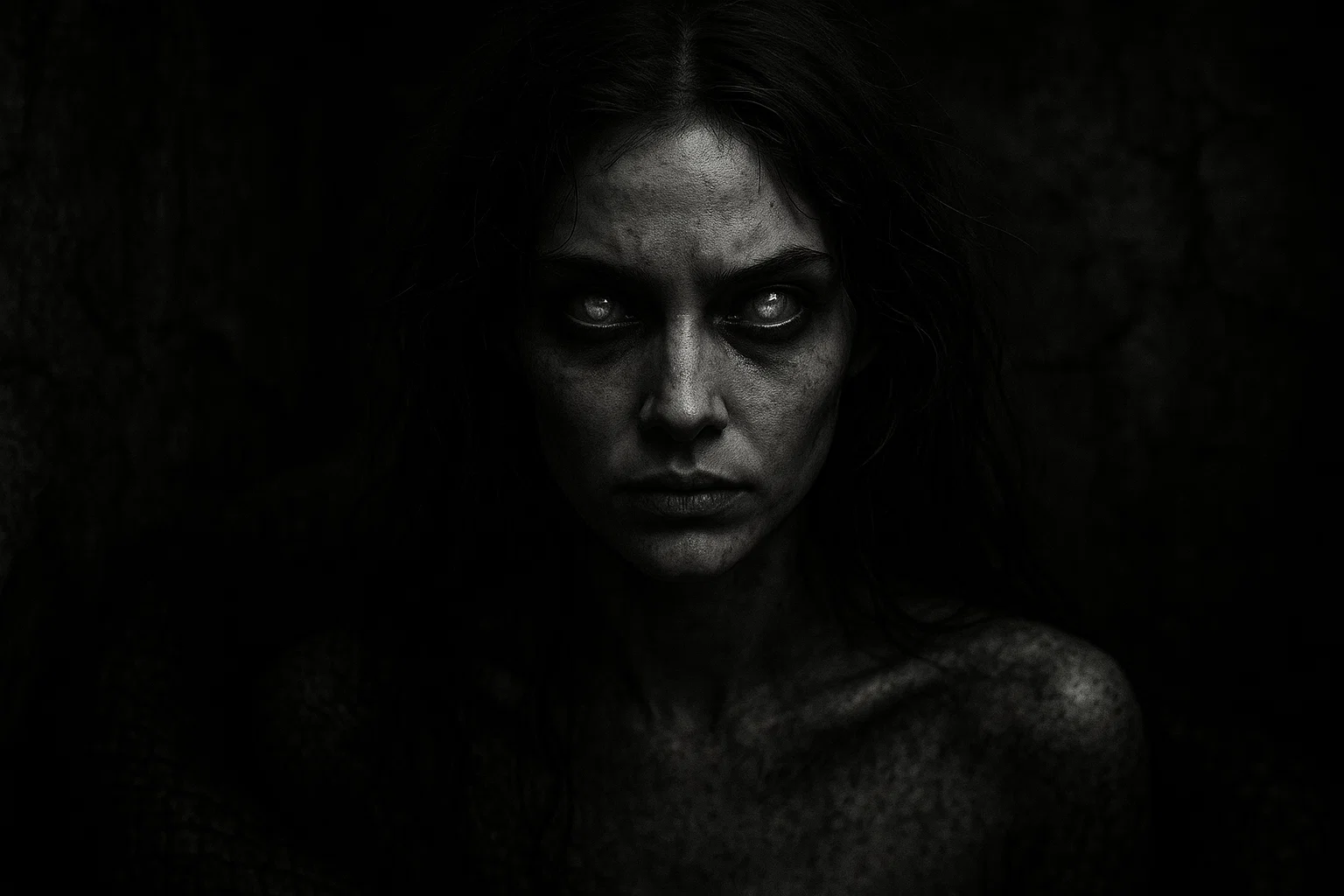The Jan van Calster werewolf case of 1598 is a chilling chapter in the haunted history of the Spanish Netherlands, where a humble villager faced ghastly accusations of transforming into a ravenous wolf to attack children.
Set in a fear-soaked era of witch-hunts and religious turmoil, this enigmatic trial stands out for its rare acquittal, defying the bloodthirsty justice of the time.
This gripping tale explores the dark undercurrents of lycanthropy beliefs, offering a haunting glimpse into a paranoid society gripped by supernatural dread.
Summary
Overview
| Aspect | Details |
|---|---|
| Name | Jan van Calster |
| Year | 1598 (March–April) |
| Location | Near Mechelen or Antwerp, Spanish Netherlands (modern-day Belgium) |
| Occupation | Likely peasant, day laborer, or vagrant; possibly woodcutter or herder |
| Family Status | No records; likely unmarried or widowed, possibly childless |
| Accusation | Shapeshifting into a wolf and biting two children |
| Victims | Two unnamed children (aged ~8–12); non-fatal bite wounds |
| Modus Operandi | Alleged transformation into a wolf, attacking with fangs and claws |
| Discovery | Children’s terrified testimony to parents, sparking village panic |
| Witnesses | Pieter Claes (farmer), Anna Mertens (seamstress), Father Lukas (priest), children’s parents |
| Key Figures | Jan van Calster, Captain Willem Janssen (militia leader), Father Lukas (priest), unnamed magistrate |
| Primary Sources | Brief mentions in Spanish Netherlands trial records, church logs |
| Secondary Sources | Regional chronicles, oral traditions, 19th-century folklorist accounts |
| Related Cases | Peter Stumpp (1589), Gilles Garnier (1573), Jacques Roulet (1598) |
Who Was Jan van Calster?
Jan van Calster was an obscure peasant in the turbulent Spanish Netherlands of the late 16th century, likely born in the 1560s near Mechelen or Antwerp.
As a commoner, he eked out a precarious living as a day laborer, woodcutter, or herder, toiling in muddy fields or dense forests. Historical records are sparse, but he was likely a solitary figure, possibly unmarried or widowed, with no documented family ties.
His lowly status made him a prime target for village suspicion in a Catholic stronghold where lycanthropy was equated with diabolical sorcery.
Van Calster’s life was likely marked by hardship. The Spanish Netherlands, under Habsburg rule, faced economic strain from the Eighty Years’ War and religious strife between Catholics and Protestants. As a vagrant or itinerant worker, he may have wandered between hamlets, earning mistrust for his transient habits.
Village gossip—noted by Father Lukas in church logs—described him as reclusive, with unkempt hair and a gaunt frame, traits that fueled rumors of supernatural dealings.
His arrest in 1598 for biting two children as a wolf thrust this unassuming man into the maelstrom of witch-hunt paranoia, where marginal figures were often scapegoated for unexplained horrors.
Jan van Calster’s Story
The Jan van Calster werewolf case erupted in March 1598, in a rural hamlet near Mechelen or Antwerp, where superstitious dread ran rampant.
Amidst the religious fervor of the Spanish Netherlands, Van Calster was accused of shapeshifting into a ferocious wolf and attacking two children, igniting terror in a fear-soaked community.
This harrowing episode, though non-lethal, reflects the era’s obsession with lycanthropy as a diabolical curse.
You May Also Like: Types of Werewolves Ranked by Power and Origin
Early Life and Background
Jan van Calster was born around 1560–1565 in a hardscrabble village, likely near Mechelen, a bustling hub under Habsburg control. As a peasant, he grew up in a ramshackle hovel, surrounded by windswept fields and shadowy forests.
His early years were shaped by famine and war, with the Eighty Years’ War (1568–1648) disrupting trade and livelihoods. Likely uneducated, Van Calster may have worked as a shepherd, woodcutter, or field hand, earning meager wages to survive.
Church records suggest he was baptized Catholic, but his solitary nature—possibly widowed or estranged—made him a village outcast.
By his 30s, Van Calster was a gaunt figure, often seen trudging through muddy lanes or loitering near forest edges. Villagers, like Pieter Claes, noted his eerie silence and furtive glances, traits that stoked suspicion.
His lack of kin—no wife or children recorded—isolated him further, as family ties were social anchors in tight-knit hamlets. The Spanish Netherlands was a cauldron of fear, with witch-hunts claiming ~100,000 lives across Europe, per historical estimates.
Lycanthropy tales, like those of Peter Stumpp, amplified local paranoia, making Van Calster a convenient scapegoat.
Crimes and Accusations
On 10 March 1598, the tranquil hamlet was shattered by ghastly accusations. Two children, Greta de Vos (10) and Hans Mertens (8), claimed a wolf-like creature attacked them in a twilit forest near their village.
Their terrified screams drew parents, who found jagged bite marks on their arms and legs, oozing crimson gore. The children, trembling and tear-streaked, described a snarling beast with bristling fur and gleaming fangs, which they insisted was Jan van Calster in wolf form.
The wounds—deep gashes and torn flesh—were presented to the village magistrate as evidence of lycanthropic assault.
The attacks occurred in a secluded clearing, where the children were gathering kindling. Greta recounted the beast lunging from shadows, its claws slashing her arm, leaving livid scars. Hans described jaws snapping near his throat, narrowly escaping with a gouged leg.
Their tattered clothing, drenched in blood, was displayed at a village meeting, igniting mass hysteria. Pieter Claes, a farmer, claimed he saw a wolf-like figure with fiery eyes near the forest on 8 March, while Anna Mertens, a seamstress, reported eerie howls piercing the night’s silence.
Father Lukas, the local priest, declared the attacks a diabolical sign, urging vigils to purge evil.
The community was convulsed with fear. On 11 March, the children’s parents, Dirk de Vos and Elke Mertens, alerted the magistrate, demanding justice. Rumors swirled that Van Calster had made a Satanic pact, enabling shapeshifting.
Unlike cannibalistic cases like Gilles Garnier, no deaths occurred, but the children’s wounds were gruesome enough to fuel panic. Local lore painted Van Calster as a nocturnal prowler, his gaunt silhouette spotted near barns and thickets.
The accusations likely stemmed from village grudges, as Van Calster’s reclusive habits made him a target for suspicion.
Discovery and Community Response
The crimes were discovered when Greta and Hans stumbled home, blood-soaked and shrieking. Dirk de Vos found his daughter clutching her mangled arm, while Elke Mertens bandaged her son’s torn leg, their anguished cries drawing neighbors.
On 11 March, the parents marched to the magistrate’s hall, presenting the children’s wounds as proof of lycanthropy. The village erupted in chaos: mothers barricaded children, farmers abandoned fields, and taverns buzzed with terrified whispers of a wilkołak.
Father Lukas led candlelit vigils, ringing church bells to banish evil. On 12 March, Captain Willem Janssen organized militia patrols, armed with muskets and blessed silver, scouring forests for the beast.
Village elders, like Pieter Claes, recounted spectral sightings, claiming a wolf-like shadow lurked near haystacks. The community’s fear mirrored earlier werewolf scares, with six men executed for lycanthropy in the region since 1589, per historical records.
You May Also Like: Slavic Vampires: The Terrifying Truth About the Upyr
The Hunt and Arrest
The hunt for Van Calster was swift and frenzied. On 12 March 1598, Captain Willem Janssen led militiamen to Van Calster’s dilapidated hovel. Kicking down the door, they found him cowering amidst rotting straw, his haggard face etched with dread.
Shackled in iron chains, he was dragged through jeering crowds hurling rotten apples. The children, Greta and Hans, pointed at him, sobbing that he was the wolf. No physical evidence—like a wolf pelt or occult charm—was found, weakening the case.
The arrest, witnessed by Anna Mertens, fueled village rumors of diabolical sorcery.
Jan van Calster’s Werewolf Trial
The trial of Jan van Calster in March 1598 was a tense spectacle in a Mechelen courthouse, reflecting the Spanish Netherlands’ judicial rigor.
Unlike the gruesome executions of Peter Stumpp or Gilles Garnier, Van Calster’s acquittal was a startling anomaly, driven by scant evidence and judicial caution. No torture or execution occurred, as historical records confirm his release.
Capture and Interrogation
On 12 March 1598, militiamen stormed Van Calster’s hovel, binding him in rusted irons. Hauled to a dank gaol, he was confined in a vermin-infested cell, its stone walls dripping with mildew.
From 13–14 March, the magistrate, Master Hendrik van der Linden, and Father Lukas conducted grueling interrogations. Van Calster, gaunt and defiant, denied shapeshifting, insisting he was a simple laborer.
Unlike typical witch trials, no thumbscrews or racks were used, as the magistrate sought a confession through verbal pressure.
Greta de Vos and Hans Mertens recounted their terrifying ordeal, describing jaws snapping and claws tearing. Pieter Claes testified to seeing a wolf-like figure on 8 March, while Anna Mertens spoke of unholy howls.
The children’s wounds were examined but deemed inconclusive by a village barber-surgeon, as animal bites could not be distinguished. Van Calster’s steadfast denial—no pact with Satan, no transformation—frustrated the prosecution, as no occult relics were found.
Legal Proceedings
The trial began on 15 March 1598, in a crowded courthouse lit by flickering torches. Master Hendrik van der Linden presided, with Father Lukas invoking divine judgment.
The children’s testimony was central, their tearful accounts of wolf attacks stirring the crowd. Dirk de Vos and Elke Mertens demanded punishment, but no witnesses saw Van Calster transform. The magistrate probed for corroboration, finding only village gossip.
Catholic doctrine, equating lycanthropy with witchcraft, urged conviction, but judicial skepticism—influenced by emerging legal standards—prevailed.
On 17 March, Van der Linden ruled insufficient evidence, citing no confession and no physical proof. The children’s youth and potential coercion by parents raised doubts. The acquittal on 18 March stunned the village, as werewolf trials typically ended in death.
Outcome and Aftermath
Released on 18 March, Van Calster was freed from his fetid cell, but his reputation was shattered. Jeering villagers pelted him with mud, forcing him to flee the hamlet.
His fate is unknown—he may have wandered to another village or perished in obscurity. The community remained fractured: Father Lukas preached of lingering evil, while Pieter Claes insisted justice was denied.
The children recovered, their scars fading, but village paranoia persisted, with rumors of wilkołak sightings.
You May Also Like: Werewolf Bloodline? The Dark Truth of the Gandillon Family
Jan van Calster vs. Other Werewolves
| Werewolf Case | Region | Period | Accusation Details | Unique Element |
|---|---|---|---|---|
| Peter Stumpp | Bedburg, Germany | 1589 | Killed 16, used magical belt; tortured, broken on wheel, beheaded. | Massive victim count; sadistic execution with wheel and flaying. |
| Gilles Garnier | Dole, France | 1573 | Ate four children; demonic aid; burned at stake. | Famine-driven cannibalism; hermit lifestyle. |
| Werewolves of Poligny | Poligny, France | 1521 | Three men ate children; devil’s ointment; burned at stake. | Group accusation; early ointment use. |
| Jean Grenier | Bordeaux, France | 1603 | Boy attacked children; wolfskin gift; imprisoned as insane. | Youthful accused (14); insanity plea spared execution. |
| Jacques Roulet | Angers, France | 1598 | Killed boy; salve transformation; deemed insane, not executed. | Insanity defense; found blood-soaked. |
| Thiess of Kaltenbrun | Livonia, Estonia | 1692 | Fought devils as werewolf; whipped, banished. | Benevolent werewolf; claimed God’s Hound. |
| Beast of Gévaudan | Gévaudan, France | 1764–67 | Killed 100+; hunted, no human culprit; unresolved. | Cryptozoological mystery; massive national hunt. |
| Hans the Werewolf | France | 1582 | Livestock attacks; confessed, executed. | Obscure case; rural livestock focus. |
| Werewolf of Châlons | Châlons, France | 1598 | Lured children; cannibalism; burned at stake. | Infamous cannibal; records destroyed. |
| Manuel Blanco Romasanta | Galicia, Spain | 1853 | 13 murders; lycanthropy claim; life imprisonment. | Modern psychological defense; Spain’s serial killer. |
| Auvergne Werewolf | Auvergne, France | 1558 | Woman transformed via occult ritual; burned at stake. | Female accused; transformed paw motif. |
| Claudia Gaillard | Burgundy, France | 1598 | Attacked villagers; tortured, burned at stake. | Female werewolf; no transformation witnessed. |
Van Calster’s child victims align with Grenier and Roulet, reflecting vulnerable targets. His lycanthropic accusation mirrors Stumpp and Garnier, rooted in diabolical fears. The community panic echoes Gévaudan’s hysteria.
Van Calster’s acquittal contrasts with Stumpp’s tortured execution or Romasanta’s imprisonment. The non-lethal bites differ from cannibalistic cases, and no torture sets it apart from Poligny or Gaillard. The lack of physical evidence distinguishes it from Roulet’s blood-soaked discovery.
Was Jan van Calster a Real Werewolf?
The Jan van Calster werewolf case is a shadowy fragment in the annals of lycanthropy, with scant documentation limiting historical clarity. Brief mentions in Spanish Netherlands trial records and church logs confirm a 1598 accusation of biting two children in wolf form, followed by acquittal.
The paucity of primary sources—no surviving court transcripts or parish registers—makes the case a historical puzzle, enriched only by oral traditions and folklorist retellings.
Historical sources:
- Spanish Netherlands Trial Records (1598): A terse mention notes Van Calster’s arrest and acquittal for lycanthropy, citing insufficient evidence. No court documents survive, likely destroyed during war.
- Church Logs: Father Lukas’s sermons, recorded in Mechelen parish records, reference a werewolf scare in March 1598, urging vigils against diabolical forces.
- Regional Chronicles: Vague accounts from Mechelen or Antwerp describe a village panic over wolf attacks, possibly linked to Van Calster.
- Oral Traditions: 19th-century folklorist accounts recount a wilkołak tale near Mechelen, naming a laborer accused of shapeshifting.
- Secondary Analyses: Modern scholars, like those studying witch-hunts, cite Van Calster as an example of judicial restraint in lycanthropy cases.
You May Also Like: Who Was the Werewolf of Klein-Krams?
Accuracy and Inaccuracies
The accusation of biting two children is credible but unverified. Greta de Vos and Hans Mertens’s bite marks—jagged wounds on arms and legs—could have been from stray dogs or human injuries, misinterpreted in a superstitious era.
The children’s testimony, likely coerced by fearful parents, was vivid but lacking corroboration. The acquittal on 18 March 1598, per trial records, reflects judicial caution, as no confession or physical evidence (e.g., wolf pelt, occult charm) was found.
Pieter Claes and Anna Mertens’s sightings of a wolf-like figure were anecdotal, tainted by village hysteria.
Supernatural claims—shapeshifting, diabolical pacts—are folkloric exaggerations. The Spanish Netherlands saw six lycanthropy executions from 1589–1661, but Van Calster’s case lacked the cannibalistic horror of Stumpp or Garnier.
The children survived, their scars healing, unlike fatal attacks in other cases. The absence of torture suggests legal restraint, as witch-hunts typically relied on coerced confessions.
Cultural and Historical Context
The Spanish Netherlands in 1598 was a maelstrom of Catholic zeal and Protestant rebellion, with witch-hunts targeting outsiders. Wolf attacks were common, with famine driving predators near villages.
Lycanthropy was a cultural lens for unexplained violence, as seen in Stumpp’s 1589 trial. Van Calster’s acquittal reflects an emerging skepticism, as courts began requiring evidence over superstition.
The children’s accusations mirror child-driven witch trials, where youthful testimony fueled convictions.
Conclusion
The Jan van Calster werewolf case is a haunting echo of 16th-century paranoia, where a humble peasant faced monstrous accusations in a fear-ravaged society.
His acquittal in 1598, a rare triumph amidst witch-hunt fervor, highlights the fragility of justice when superstition reigns. The scarcity of records leaves his story veiled in mystery, but it remains a poignant testament to the dangers of collective fear.
Van Calster was no werewolf, but a scapegoat for a village’s dread. His tale—of false accusations and judicial mercy—endures as a cautionary saga, reminding us how fear can distort truth and condemn the innocent.

